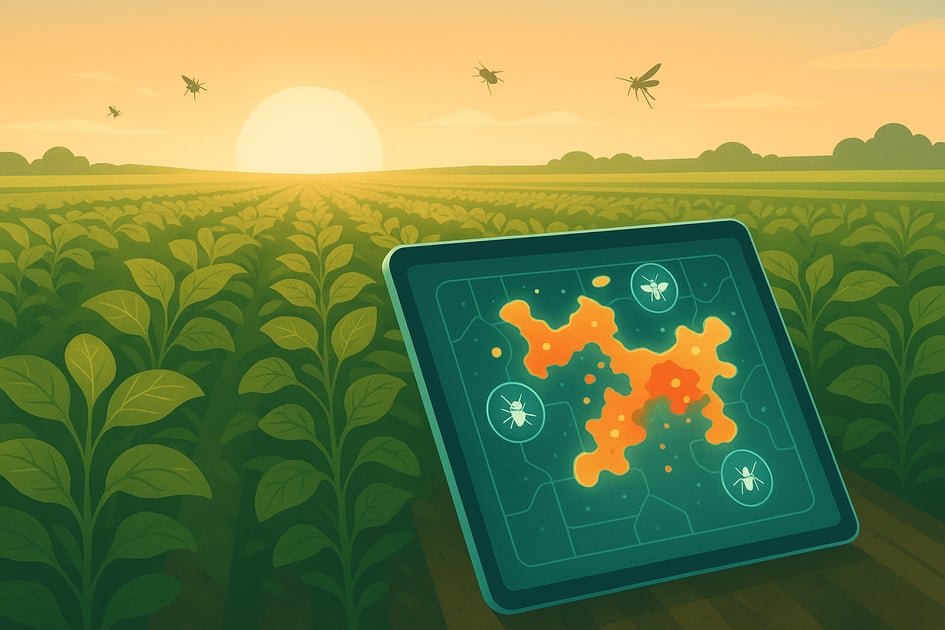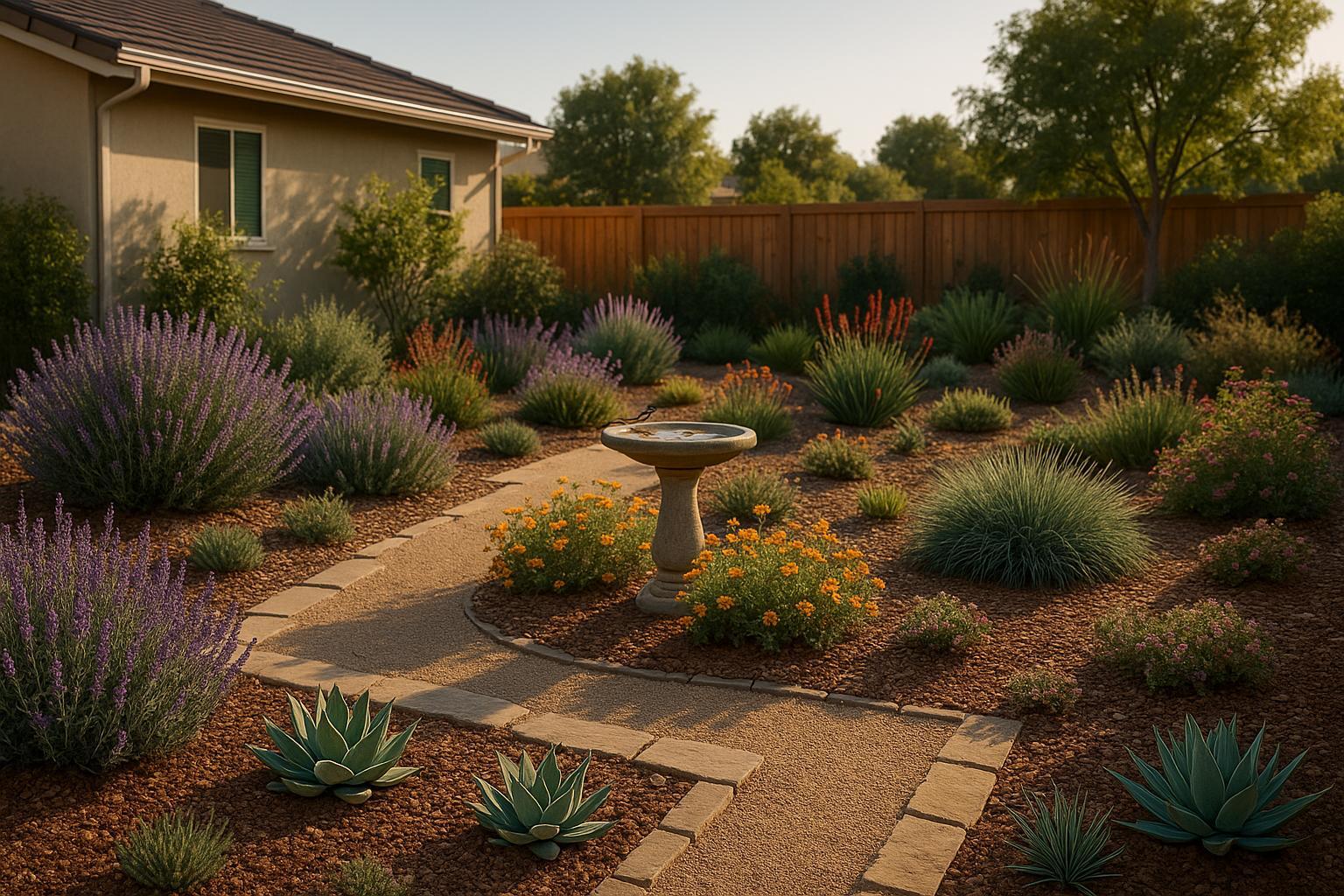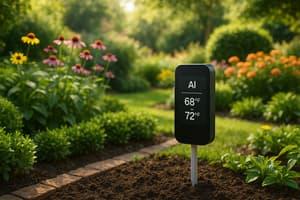AI Models for Pest Outbreak Prediction

Pest outbreaks can devastate crops, harm the environment, and threaten food security. AI tools are changing the game by predicting these outbreaks early, helping farmers and gardeners take preventive actions. Here's what you need to know:
- What AI Does: AI analyzes data like weather, soil conditions, and pest trends to predict risks.
- How It Helps: Early warnings mean fewer pesticides, healthier crops, and reduced costs.
- Tools to Try: Platforms like AIGardenPlanner offer tailored advice for plant selection, garden layout, and pest prevention.
Weather based Pest Prediction Overview

How AI Models Predict Pest Outbreaks
AI models analyze various types of data to predict pest outbreaks, allowing gardeners and farmers to take preventive measures in advance.
AI and Machine Learning Techniques
AI-powered pest prediction relies on several advanced methods, including:
- Deep Learning Networks: These systems examine historical pest data alongside environmental factors to identify potential risks.
- Computer Vision: By analyzing images from gardens or satellite data, these tools can spot early signs of pest activity.
- Pattern Recognition: Algorithms detect links between local environmental factors and pest outbreaks, quickly processing large datasets - like photos - to assess pest risks.
Data Sources Used
To create accurate forecasts, AI pest prediction models rely on diverse data types:
| Category | Examples | Purpose |
|---|---|---|
| Environmental | Temperature, humidity, rainfall | Evaluate conditions that encourage pest growth |
| Biological | Pest lifecycle stages, population trends | Track pest development over time |
| Historical | Past outbreak records, seasonal trends | Highlight recurring patterns |
| Geographic | Soil conditions, terrain features | Assess location-specific risks |
These systems constantly update predictions with new data, accounting for elements like local climate changes, seasonal cycles, and soil properties. This personalized approach helps users address potential pest issues effectively.
The following sections will explore research insights and real-world examples of these methods in action.
Research Results and Success Cases
Latest Research Results
Initial studies suggest that AI models can identify pest risks sooner, allowing for targeted actions that could lower pesticide usage and improve crop care. This approach offers a way to manage crops more effectively while relying less on chemicals.
Success Stories in Gardens and Farms
Tools like AIGardenPlanner combine AI-driven design with predictive analytics to improve plant selection, spacing, and upkeep, leading to healthier, more resilient gardens. These early achievements highlight how AI can make a difference in both gardening and farming, while also sparking further discussions about its strengths and limitations in pest management.
sbb-itb-4d6a8dd
🚀 Ready to Reinvent Your Garden?
Join thousands of homeowners who have transformed their gardens using our AI design tool. Upload one photo to explore endless possibilities.
Get your AI garden designs →Strengths and Limits of AI Prediction
AI vs Standard Prediction Methods
AI-based pest prediction systems offer a new way to identify pest issues faster than traditional methods. By continuously analyzing large datasets, these systems can spot potential problems early. However, human expertise is still crucial to verify AI-generated insights. Traditional methods provide important context that complements AI's capabilities. Together, they highlight the importance of a balanced approach - merging real-time AI data with established practices for effective pest management. This combination allows garden professionals to make the most of these tools.
Benefits for Garden Professionals
AI tools are helping garden professionals create healthier, more resilient spaces. For example, platforms like AIGardenPlanner use AI to factor in historical pest trends and potential risks. This allows for proactive planning, such as adjusting planting times or implementing preventative measures early. When AI predictions are paired with hands-on experience and traditional monitoring, the result is a more efficient and effective way to manage pests. This approach helps professionals stay ahead of challenges while maintaining healthier gardens.
Next Steps in AI Pest Prediction
Emerging AI tools are transforming how we approach garden planning and pest management, building on earlier research and successful applications.
AI Pest Tools in Garden Design
AI-powered tools are making it easier to prevent pest issues through smarter garden planning. For instance, AIGardenPlanner’s AI Plant Advisor uses local data to suggest pest-resistant plant combinations tailored to specific climate zones and regional challenges. This allows gardeners and landscapers to:
- Create garden layouts that naturally deter pests
- Choose plants suited to local conditions and pest risks
- Plan maintenance schedules based on predicted pest activity
Enhanced Prediction Systems
AI pest prediction systems are also improving how we forecast and manage pest problems. By combining location-specific insights with detailed guides and maintenance plans, these tools provide personalized alerts and recommendations tailored to individual garden layouts and plant choices.
For example, AIGardenPlanner integrates location-based plant recommendations with in-depth growing guides, helping both hobbyists and professional landscapers design durable gardens without compromising on aesthetics. With over 50 garden styles to choose from, users can maintain their preferred look while staying ahead of pest challenges.
Conclusion
AI-powered pest prediction is changing how gardens and farms are managed by using detailed data analysis. These systems process historical pest trends, weather patterns, and local conditions to help predict potential pest outbreaks.
By incorporating AI into garden planning and pest control, gardeners and farmers can adopt more sustainable practices. Advanced AI tools provide tailored advice based on specific conditions and local pest issues.
With these predictions, it's easier to spot problems early, apply treatments precisely, and reduce dependence on chemical pesticides.
As AI pest prediction technology continues to improve, it’s becoming more accessible. Tools like AIGardenPlanner show how AI can seamlessly combine pest management with garden planning, using localized data to guide decisions.
FAQs
How does AI compare to traditional methods for predicting pest outbreaks, and why is a combination of both effective?
AI offers significant advantages over traditional methods in predicting pest outbreaks by analyzing vast amounts of data, identifying patterns, and providing accurate, real-time predictions. Traditional methods, such as manual monitoring and historical trend analysis, can be time-consuming and less precise but are grounded in field expertise and localized knowledge.
A combined approach leverages the best of both worlds: AI's speed and scalability paired with the nuanced insights of traditional methods. This synergy can improve prediction accuracy, helping farmers and gardeners take proactive steps to manage pests effectively and sustainably.
What data is essential for AI to predict pest outbreaks, and how is it gathered?
AI models rely on a variety of data types to accurately predict pest outbreaks. Key data includes weather patterns (such as temperature, humidity, and rainfall), soil conditions, crop types, and historical pest activity. These factors help models identify conditions that may lead to pest infestations.
This data is typically collected through a combination of sources, including satellite imagery, weather stations, sensors in agricultural fields, and reports from farmers or researchers. Advanced AI systems analyze this information to detect patterns and predict potential outbreaks, helping growers take timely preventive actions.
Can AI tools like AIGardenPlanner help create gardens that naturally resist pests?
Yes, AI tools like AIGardenPlanner can help design gardens that are naturally resistant to pests. By providing tailored plant recommendations based on your location, climate, and preferences, the platform helps you select plants that thrive in your environment and are less prone to pest issues.
Additionally, designing a well-balanced garden with the right plant combinations can enhance natural pest resistance. AIGardenPlanner makes this process easier by offering professional-grade tools to create thoughtful, sustainable garden layouts that promote healthier plants and reduce the likelihood of pest infestations.
🎨 Visualize Your Dream Garden Today!
Transform any outdoor space into a professional landscape design in minutes. Just upload a photo, choose your style, and let our AI do the rest.
Start your garden transformation now →Related posts
Related Articles

5 Steps to Create a Low-Water Garden
Transform your outdoor space with a low-water garden using simple steps that save money, reduce maintenance, and support ecosystems.

AI-Driven Garden Furniture Placement: How It Works
Transform your garden with AI-driven furniture placement that optimizes style, comfort, and functionality based on your space and preferences.

How AI Regulates Garden Temperatures Automatically
AI systems automate garden temperature control, ensuring optimal conditions for plants while conserving energy and resources.

How AI Matches Plants to Your Garden Style
AI tools revolutionize garden planning by providing personalized plant recommendations based on your garden style, climate, and preferences.

7 Common Low Voltage Lighting Problems
Explore common low voltage lighting problems and their solutions to ensure your outdoor lighting system remains efficient and beautifully illuminated.

The Ultimate Guide to Yard Tool Garage Storage: Types, Benefits, and Choosing the Right Solution
Learn about the importance of yard tool garage storage, the benefits of proper storage, and consequences of poor storage. Discover different types of yard tool garage storage and how to choose the right solution for your space, tools, and budget.